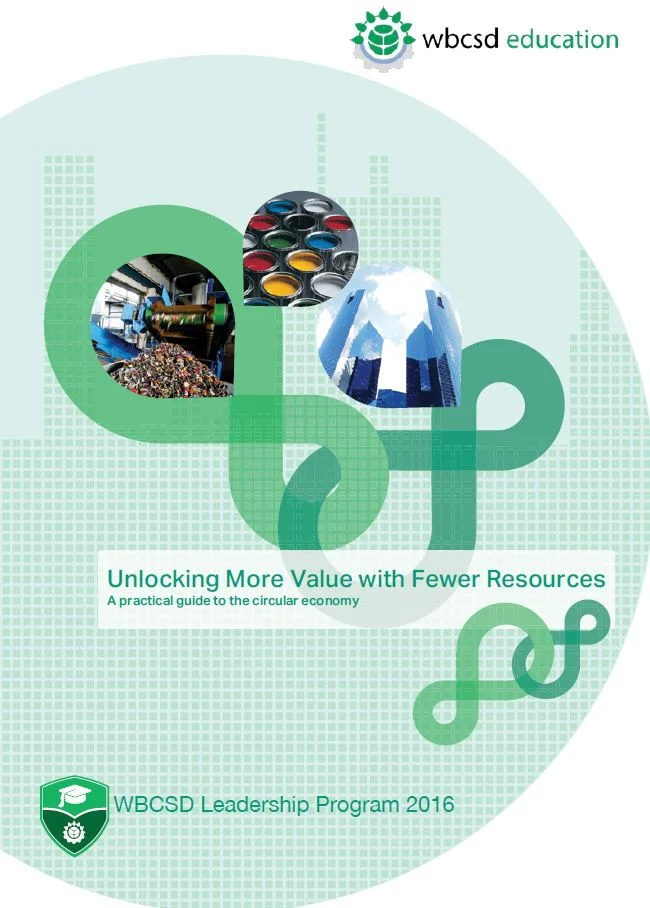Unlocking More Value with fewer resources
A practical guide to the circular economy
Published: September 28, 2016

Businesses need to grow and at the same time recognize that growth at the expense of people or the environment is both unacceptable and unsustainable. Sustainable growth is the only acceptable model for businesses.
To achieve sustainable growth, companies need to be fully aware of the constant changes worldwide that impact their businesses, including climate change, population growth and the increasing scarcity of raw materials and commodities.
The current linear “take-make-dispose” economy mindset will need to shift towards a circular economy model in order to decouple value creation from the consumption of finite resources. Moving towards a circular economy represents significant economic, social and environmental opportunities for business.
Moreover, a circular economy could significantly reduce greenhouse gas (GHG) emissions and create new jobs, leading to positive social impact. The case for circular economy approaches on a macro level is compelling, but the key challenge is to translate the vision into concrete action for businesses.
This practical guide aims to help companies start the transition towards a circular economy to unlock more value with fewer resources. The methodology has been designed with the goal of achieving maximum impact on the triple bottom line (environmental, social and economic value).
The guide includes several concrete business cases to inspire action. It has been developed with input from expert interviews (for instance Yale University, the Ellen MacArthur Foundation, WBCSD or company leaders) and literature research.
